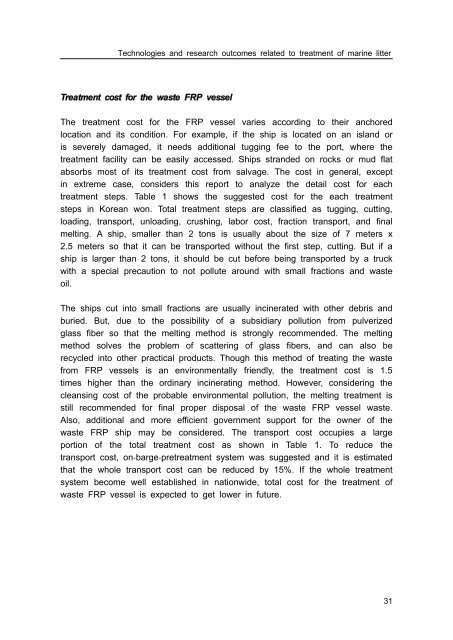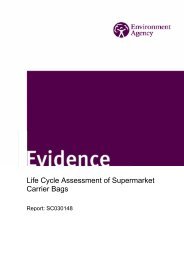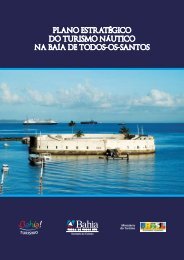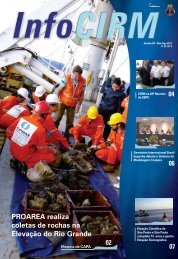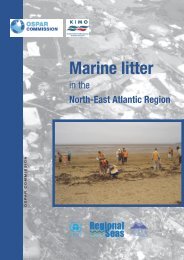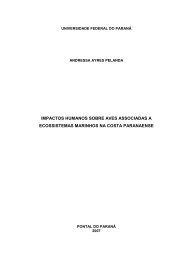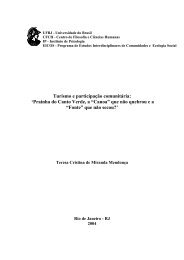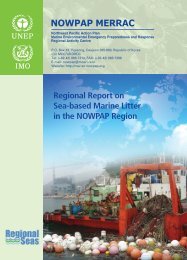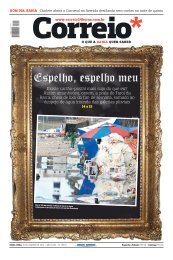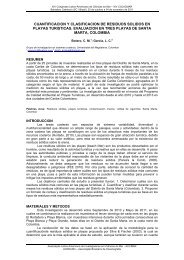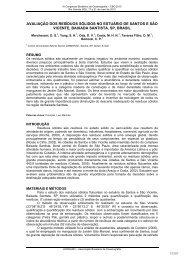Report on Technologies and Research Outcomes ... - nowpap dinrac
Report on Technologies and Research Outcomes ... - nowpap dinrac
Report on Technologies and Research Outcomes ... - nowpap dinrac
You also want an ePaper? Increase the reach of your titles
YUMPU automatically turns print PDFs into web optimized ePapers that Google loves.
<strong>Technologies</strong> <strong>and</strong> research outcomes related to treatment of marine litterTreatment cost for the waste FRP vesselThe treatment cost for the FRP vessel varies according to their anchoredlocati<strong>on</strong> <strong>and</strong> its c<strong>on</strong>diti<strong>on</strong>. For example, if the ship is located <strong>on</strong> an isl<strong>and</strong> oris severely damaged, it needs additi<strong>on</strong>al tugging fee to the port, where thetreatment facility can be easily accessed. Ships str<strong>and</strong>ed <strong>on</strong> rocks or mud flatabsorbs most of its treatment cost from salvage. The cost in general, exceptin extreme case, c<strong>on</strong>siders this report to analyze the detail cost for eachtreatment steps. Table 1 shows the suggested cost for the each treatmentsteps in Korean w<strong>on</strong>. Total treatment steps are classified as tugging, cutting,loading, transport, unloading, crushing, labor cost, fracti<strong>on</strong> transport, <strong>and</strong> finalmelting. A ship, smaller than 2 t<strong>on</strong>s is usually about the size of 7 meters x2.5 meters so that it can be transported without the first step, cutting. But if aship is larger than 2 t<strong>on</strong>s, it should be cut before being transported by a truckwith a special precauti<strong>on</strong> to not pollute around with small fracti<strong>on</strong>s <strong>and</strong> wasteoil.The ships cut into small fracti<strong>on</strong>s are usually incinerated with other debris <strong>and</strong>buried. But, due to the possibility of a subsidiary polluti<strong>on</strong> from pulverizedglass fiber so that the melting method is str<strong>on</strong>gly recommended. The meltingmethod solves the problem of scattering of glass fibers, <strong>and</strong> can also berecycled into other practical products. Though this method of treating the wastefrom FRP vessels is an envir<strong>on</strong>mentally friendly, the treatment cost is 1.5times higher than the ordinary incinerating method. However, c<strong>on</strong>sidering thecleansing cost of the probable envir<strong>on</strong>mental polluti<strong>on</strong>, the melting treatment isstill recommended for final proper disposal of the waste FRP vessel waste.Also, additi<strong>on</strong>al <strong>and</strong> more efficient government support for the owner of thewaste FRP ship may be c<strong>on</strong>sidered. The transport cost occupies a largeporti<strong>on</strong> of the total treatment cost as shown in Table 1. To reduce thetransport cost, <strong>on</strong> barge pretreatment system was suggested <strong>and</strong> it is estimatedthat the whole transport cost can be reduced by 15%. If the whole treatmentsystem become well established in nati<strong>on</strong>wide, total cost for the treatment ofwaste FRP vessel is expected to get lower in future.31


